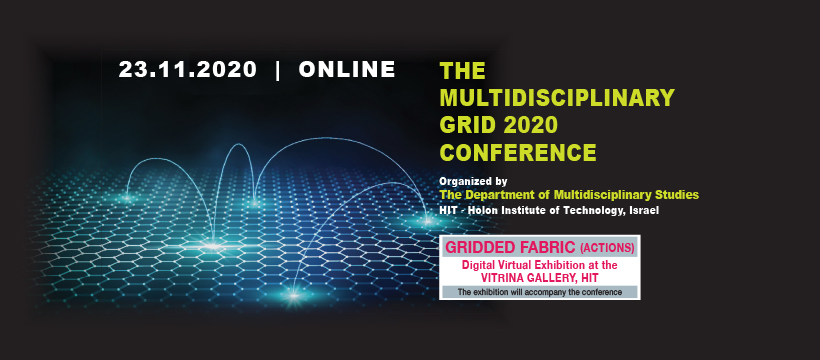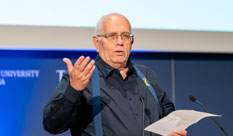More:
Events
The Multidisciplinary Grid 2020 Conference
About the conference
The conference is aimed at examining the ‘grid’ as a cross-disciplinary theme with a multiplicity of expressions in terms of definitions, concepts, perceptions, representations, and histories. The ‘grid’ has always played a significant role in shaping the spatial imaginaries of a wide range of fields: from Hippodamus of Miletus to the Cartesian revolution in mathematics, from the visual arts to archaeology to 'smart cities' and artificial intelligence. Hence, there is no single essence of the grid, and the conference is open to all associations between orthogonal frames and ordering devices, between geo-coded networks and technical operations, via off-the grid situations.
As the 'grid' has become an all-encompassing term, signifying a vast array of infrastructural and communication networks through which contemporary life is mediated and controlled, it is commonly viewed as a quintessential symbol of modernity. This conference strives to explore a new horizon of relationships and fusion of the 'grids' in these areas as manifested between humans, between machines, and between humans and machines ‒ bridging philosophical, cultural, pedagogical, technical and ethical issues. The conference will in this way foster a fruitful dialogue concerning the grid among researchers, practitioners and artists.
Accompanying the Multidisciplinary Grid 2020 international conference taking place at HIT, the exhibition Gridded Fabric(ations), is being presented in a 3D digital format at the Institution's Vitrina Gallery. The (virtual) gallery's space provides a template for multivocal, multifaceted and multiscaled expressions of gridded imaginaries, reflecting the personalized views of the eighteen participating artists.
In their challenging interpretations of the all-encompassing, elusive and abstract term of 'the Grid,' the artworks are made of a rich and an almost unexpected conjuncture of materials and mediums. They embody – each in itself as well as their collective art-scape ‒ a processual dimension of searching, of querying, and of combining multidisciplinary methodologies through the creation process.
By thus, the artworks materialize and validate the classical statement of the art theorist Rosalind Krauss, that "it is safe to say that no form within the whole of modern aesthetic production has sustained itself so relentlessly while at the same time being so impervious to change." They also operate beyond this statement, by constituting ‘networks’ or infrastructures that are composed of circulating references, immutable mobiles and hybrid assemblages of our current life in a globalizing world.
The visitor is therefore invited to mediate between the micro-cosmos of the gallery and an associative, fabricated macro-cosmos that encompass both immobility and movement, regularity and continuity, multiplicity and repetition, difference and uniformity. But more than producing any atmosphere of binarism, we believe that a wander at the gallery's space would tie together these qualitative dimensions of The Grid in a complimentary way, leaving an ever incomplete, curious impression.
Participant artists: Ayelet Zwickler Ackerman, Nadav Bechar, Lior Ben-Gai, Alon Bonder, Ana Dan, Emma Margarita Erenst, Danielle Feldhaker, Ariel Lifschitz, Mikki Mann, Amalia Magril, Sharon Murro, Doron Oved, Igor Revelis (KLONE), Deganit Stern Schocken, Alex Schnaider, Shaul Tzemach, Merav Ofri Vax, Dan Zehavi.
About the Department of Multidisciplinary studies
HIT’s ongoing commitment to drawing and combining knowledge from a vast spectrum of fields culminated in 2018 with the establishment of the Department of Multidisciplinary Studies. An amalgamation of different units and initiatives, all dealing with diverse aspects of multidisciplinary, the department provides a formal academic framework which introduces HIT students to new intellectual worlds and research methodologies which go far beyond their core specialties. Through its 4 clusters – humanities and social sciences, integrated technologies, community-engagement, and innovation and entrepreneurship, together with English language studies, all students must take a number of classes from the department during their studies.
Posted: 15/11/2020
- News & Events
New Collaboration with Sheba Medical Center will qualify nurses to work in a digital environment.
Collaboration between HIT Holon Institute of Technology, the teaching authority of the Sheba Medical Center, and the Sheba-BEYOND virtual hospital will allow training nurses in Israel and around the world to work in a digital...





 Additional programs
Additional programs
